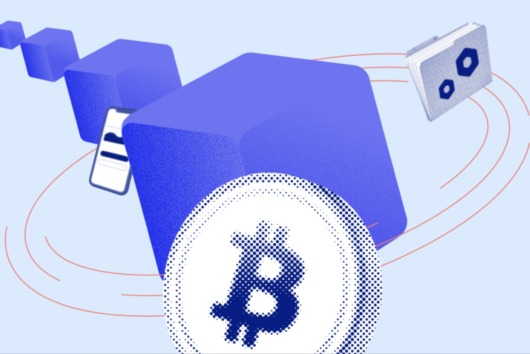Can Web3 free us all from Twitter and fake news?

Over the last 20 years the internet has changed the way we think, communicate, live our lives and do business. Today anyone with a smartphone can search through all of human knowledge via a quick Google search on their phone. Social media sites, while connecting us to our friends and family, have sold our data, often without permission. So is this it? Have we reached the end point of what the internet can hope to achieve, or is there a better way?
Enter Web3, the route out of division and information overload; but what is it exactly? Well the problem (or beauty, depending on who you ask) with Web3 is that no one is sure at this point. It’s what anyone projects onto it, but supporters are largely in agreement it will move the internet and finance along to its next stage via blockchain. To some it means ownership of data is in the hands of individuals instead of big tech companies. To others, elements of Web3 have already arrived via Ethereum and smart contracts, with NFTs making the case for handing “ownership” to users. Instead of Twitter ostensibly owning users’ tweets, in the Web3 world, users would own their social media posts.
So if that’s Web3, what was Web1 and Web2?
Web1 describes the early internet — lots of static text-based web pages held across lots of different domains. This internet emerged in the 1990s and although it allowed people to connect across the world, it was limited in its scale due to low user numbers, underdeveloped infrastructure and a lack of effective monetisation. Web1 can be thought of as an equivalent of a printed magazine; you can read what’s inside, but can’t interact by leaving a like or a comment.
To bring the internet closer together, social media platforms began to emerge in the mid 2000s. This describes the era of the internet we are currently in, Web2, where users connect on a network, such as Facebook.
Social media platforms were able to leverage the internet’s networking effects to better connect buyers & sellers, creators & consumers and tweeters & readers under their platform. Companies like Facebook, Amazon, Google and Twitter are now dominant forces online, able to leverage their user bases to sell products and target them with tailored ads according to their web history.
Big tech companies have been mired with controversy in recent years, with Meta, formally Facebook, accused of allegedly misusing users’ private data. Web3 seeks to decentralise social media and e-commerce — in the same way cryptocurrencies have sought to decentralise finance.
The problem with Web2
Targeted advertising aside, the main problem social media presents to society is the regulation of information. Misinformation and echo chambers have caused news outlets a mammoth problem. Pre-internet print media faced a bottleneck for the amount of articles that could be published and shared. There were only so many columns to fill and the cost of printing and distribution meant there were restrictions on who could write and get published.
The delay between writing and printing gave journalists and editors more time to verify and fact-check sources, but in the digital age, where clicks are king, getting a story out before the competition is the new priority. Fake news, along with social media posts, has blurred the lines between opinion and objective truth. Now, anyone can write anything about anyone else, leading to tough decisions for social media platforms. Where is the line drawn between hate speech and freedom of expression? What is objective truth? And who decides what is an agenda-driven false narrative presented as objective truth?
Social media companies have struggled with this task, with some saying they have gone too far and others saying they have not gone far enough, highlighting the impossibility of pleasing everyone in an increasingly alienated, interconnected, and disparate society. Twitter’s decision to ban President Trump in January 2021 for “inciting violence” in the Capitol Riots provoked fury from some on the grounds of “censorship”. Others were equally angry that the platform’s tolerance to his many controversial tweets over the previous four years meant the ban was too little too late.
Can social media be orange-pilled?
Let’s try to imagine how Web3 could be a way to tackle some of the above problems surrounding social media data, censorship and editorial guidelines. One of the solutions could be in the form of DAOs (decentralised autonomous organisations), which would allow members to use self-governance to decide the rules on editorial rules — imagine if Twitter only allowed news articles to be published from agreed-upon outlets?
For Web2 sites to be free, such as Facebook, the price users pay is the site’s use of their data. In a Web3 internet, users could be expected to pay to post on platforms, creating a higher barrier to entry to make the platform more exclusive. This could help deter misinformation but could create social hierarchies, where certain NFTs or memberships of communities would carry social status. However, as pointed out in Not Boring’s Status Monkeys post on this topic, this dynamic already exists on social media, with higher follower counts begetting higher engagement and more followers.
Jack Dorsey, Twitter’s outgoing CEO and founder, claimed that Web3 platforms will likely present themselves as decentralised but will not offer the “ownership” that has been promised, with this instead falling into the hands of venture capitalists. Although Dorsey has an incentive to see Web3 fail to help Web2 retain market dominance, his words offer a tonic to those who have attached unrealistic expectations to what Web3 can achieve.
Questions surrounding how Web3 can scale sustainably along with blockchain and PoW are yet to be convincingly answered. There is also the possibility that Web3 platforms will intensify echo chambers and isolate people from those they disagree with, leading to greater fragmentation in society. One of the appeals of Twitter is arguably the hostile environment. Conflict, as exhausting it may be to some, is one of the main drivers for engagement on social media, generating clicks and shares for saying things online we likely wouldn’t say in person. There is also some evidence that disagreement can lead to better decisions, with juries providing an example of where this can lead to better outcomes.
If Web3 removed this element, would we really enjoy social media in quite the same way? Without the guilty pleasure of seeing pile ons against those we disagree with, would a more harmonious platform be fun enough to attract users? The big challenge for Web3 social media will be to create spaces that balance addressing the problems of Web2 while being engaging enough to lure users away to their new platforms.
 Discover
Discover Help Centre
Help Centre Status
Status Company
Company Careers
Careers Press
Press


